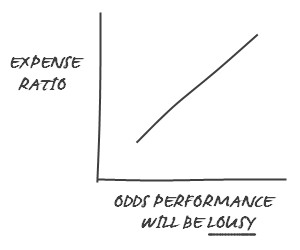A recent study conducted by mutual fund tracker Morningstar found that a bit of simple wisdom just might prove more valuable in picking mutual funds than the fancy explanations offered by Wall Street’s brokers and fund managers: pay less, earn more.
In a study released in August, Morningstar examined five broad categories of stock and bond funds, and sorted the funds based on expenses.[1] Their findings? Low fund fees are the strongest predictor of a mutual fund’s future success.

With a bit of egg on its face, Morningstar admitted that low fees proved to be an even better indicator of future results than its own well-known star rating system. The study looked at performance over 5 years—beginning in 2005 and ending in 2009—as well as 1-, 2-, 3- and 4-year returns. In all time periods, across every asset class studied, low-cost funds beat high-cost funds.
These results come as no surprise to us. We’ve long championed the idea that, while we can’t control the markets, we can control the things that matter most: How we’ll spread your nest egg across stocks, bonds, real estate and cash; how we diversify within these asset classes; when we rebalance; and how much you pay in expenses.
Consider this: the average stock mutual fund in the U.S. today charges 1.4% for management, and international stock fund fees approach 1.7%. These costs do not even factor in the generally higher tax burden imposed by high-cost, high-turnover funds. This creates a stiff headwind for those traveling on the road to retirement.
1 Kinnel, Russel. “How Expense Ratios and Star Ratings Predict Success.” MorningstarAdvisor, August 10, 2010.
